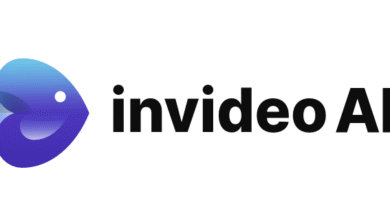The Future of AI-Generated Content in Digital Media

Artificial intelligence is reshaping the way digital content is created, delivered, and consumed. From written articles and social media posts to realistic voiceovers and dynamic video presentations, AI-generated content is becoming a fundamental part of the digital media landscape. This shift is not just a technological advancement—it’s a transformation of creative processes, cost structures, and audience engagement.
The Role of AI in Modern Content Creation
AI content generation uses machine learning algorithms to produce various types of media. These systems analyze large datasets to mimic human creativity and decision-making. In digital media, this means automating repetitive tasks, optimizing workflows, and enabling scalable production of multimedia content.
Today’s content creators—from freelancers to enterprise teams—are leveraging AI to meet increasing demands for personalized, on-brand, and platform-optimized content. AI models can produce everything from full-length videos to lifelike voiceovers and visual assets. This not only saves time but also significantly reduces production costs.
Text-to-Speech Advances and the Rise of AI Voice Technology
One of the most impactful developments in AI media tools is the ability to generate human-like voiceovers. Traditional voiceover work involves hiring voice talent, recording audio, and editing, all of which can be time-consuming and expensive. AI voice technology simplifies this process by enabling automatic generation of voiceovers using synthetic voices.
These AI voice generator tools are designed to produce speech that mimics human intonation, emotion, and pacing. Users can choose from a variety of voice styles, accents, and languages, allowing for customized voiceovers suited to different audiences and platforms. Applications include e-learning modules, explainer videos, podcasts, and even video games.
The AI voice generation process typically involves converting written scripts into audio using neural networks trained on thousands of hours of human speech. The result is realistic-sounding audio that can be produced in minutes, without the need for studio equipment or voice talent.
Video Automation and AI-Powered Production
Just as AI is revolutionizing audio content, it is also transforming video production. What once required a full team of editors, animators, and videographers can now be handled by automated systems. These platforms can turn text scripts or prompts into complete videos with appropriate visuals, transitions, music, and even voiceovers.
A modern AI video generator can interpret text and use natural language processing to create relevant scenes, animations, and audio. This drastically shortens the production cycle for video content, making it easier for individuals and businesses to produce high-quality visual media on demand.
These tools often include built-in libraries of stock footage, soundtracks, and templates, streamlining the creation of marketing videos, product demos, social media content, and more. By eliminating manual editing tasks, AI video generators help content creators focus more on storytelling and strategy.
Accessibility and Localization Through AI
AI-generated content is also playing a significant role in improving accessibility. Text-to-speech and automated captioning services ensure that video and audio content can be consumed by users with hearing or visual impairments. Additionally, AI voice and video tools allow for quick translation and localization, making content suitable for global distribution.
AI voice generators can translate and re-voice existing content in multiple languages, while maintaining tone and emotion. This is especially useful for educational content, marketing campaigns, and training videos aimed at international audiences. AI video tools can also adapt visuals and subtitles for different regions, supporting cross-cultural communication.
Challenges and Ethical Considerations
While AI content tools offer many benefits, they also come with challenges. Questions about authenticity, originality, and misinformation continue to arise as AI-generated media becomes more realistic. Deepfake technology, for example, is a byproduct of the same algorithms used in video generation, and it can be used maliciously if not regulated.
There are also ethical concerns related to voice cloning, privacy, and the use of real individuals’ likenesses without consent. Developers and users of AI media tools must ensure responsible practices, transparency, and respect for intellectual property rights.
Moreover, while AI can automate content creation, human oversight remains essential. Content still needs to be reviewed for accuracy, bias, and context to ensure it meets ethical standards and serves its intended purpose effectively.
The Future Outlook for AI-Generated Media
The continued development of AI in digital media points to a future where content creation is faster, more inclusive, and increasingly automated. Improvements in machine learning, natural language processing, and synthetic media will further enhance the quality and efficiency of AI tools.
In the near future, it is likely that AI-generated content will be fully integrated into everyday media workflows. Businesses will use AI not just to create content, but to personalize it at scale—adapting tone, format, and messaging for different customer segments automatically.
As AI systems learn from more diverse data sources and gain better contextual understanding, their outputs will become increasingly nuanced and human-like. This will open up new possibilities for storytelling, branding, and audience engagement.
Conclusion
AI-generated content is no longer an experimental trend—it is an integral part of digital media production. Whether it’s through a sophisticated AI voice generator that creates lifelike audio for training modules or an AI video generator that produces short-form content for social media, these tools are changing how content is made and shared.
For marketers, educators, creators, and developers, embracing these technologies means gaining a competitive edge in producing scalable, consistent, and compelling digital experiences. The future of AI in media is not just about automation—it’s about expanding creative potential while making content more accessible and impactful.



